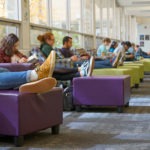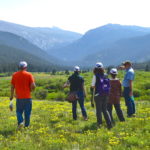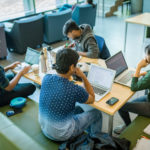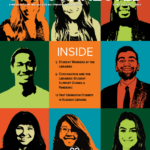By Jenna Allen
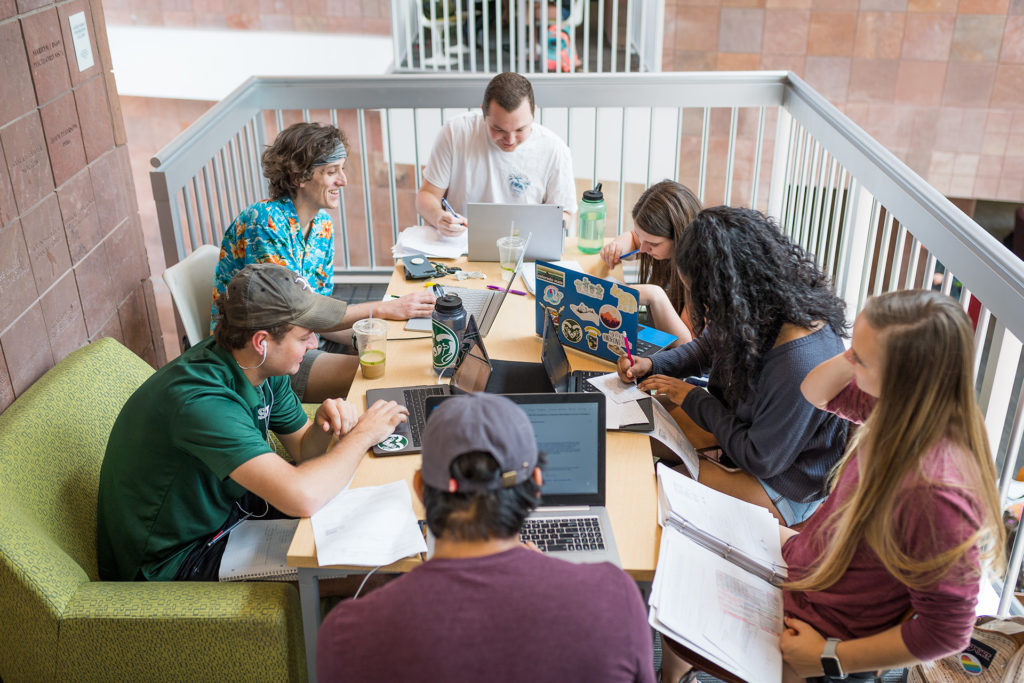
In a recent survey, 83% of Colorado State University students surveyed reported visiting the Morgan Library once a week or more, showing just how important the library is for students at CSU. It’s not just a space — it’s a place where everyone belongs.
But Robert Ayala, manager of library spaces and user experience, doesn’t take that for granted. Overseeing the care and improvements of the Morgan Library, his philosophical approach centers on continually making small changes for big wins.
“There’s a very old idea from lean manufacturing that great organizations and companies develop and practice a culture of continuous improvement, where small and seemingly minor process improvements are made everyday,” said Ayala.
“At the Libraries, this is a function of stewardship and care — not only for our students, but for ourselves as library professionals and educators,” he added.
Listening to student voices
While many students visit the Morgan Library every day, there are students who may never step foot in the building their whole time at CSU and those who only come a few times a year. Why is that? Do students feel welcome in the library? Are they facing any barriers that we can remove?
When asking these questions, library employees are practicing a user-centered approach.
“A user-centered approach to libraries is one that recognizes the agency and power of our students according to how they want to be known and how they would like to study, collaborate, research and work in our libraries,” said Ayala.
A cornerstone of a user-centered approach at the Libraries is listening to student voices. That’s why student worker Maddy Kling (B.S. ‘22) proposed a survey to evaluate diversity, equity and inclusion in the library.
“It’s important for students to feel welcome so that they can feel comfortable using the resources the library provides,” said Kling. “As an activist, I thought about what skills I can utilize to make the library a better, more inclusive space. Part of my degree requires research methods, so I came to the conclusion of creating a survey on diversity, equity and inclusion.”
She proposed the idea to her supervisor, and a team was formed to develop and distribute the survey. Librarians Khaleedah Thomas, Meggan Houlihan, and Audrey Wilcox helped Kling learn how to develop an ethical and effective survey, navigate IRB approval processes, and gather important data.
A whopping 618 students completed the survey, answering questions about their feelings and experiences in the Morgan Library, and the research team is currently diving into the survey responses to identify trends and areas for improvement. Early results show that many students feel that the library is welcoming and inclusive — but not all.
When the team finishes analyzing the survey results, the Libraries will use the findings to identify and prioritize opportunities to welcome even more students into our buildings.
Focus on accessibility, flexibility and mobility
At the Morgan Library, every element of a space contributes to feelings of inclusion or exclusion. For example, doors, furniture, acoustics, and technology can help make people feel comfortable and productive.
Last winter break, while students were taking a much-needed rest to recharge for spring semester, Ayala was overseeing improvements to study rooms at Morgan Library.
Ten study rooms on the second and third floor were fitted with new doors with wave-to-open sensors, improving both safety and accessibility. Last spring, the University Facility Fee Advisory Board contributed $219,000 in funding for these improvements that have made the study rooms more accessible and flexible.
Rooms also feature new sound mitigation acoustic panels, that help contain lively group discussions. And new 85-inch digital screens with screen-casting technology are enabling flexible types of student collaborations. Walk by the study rooms, and you’ll see students using these screens to practice presentations, share study materials or Zoom with classmates.
Conference rooms, meeting rooms and the Event Hall have also received a technology refresh to make meetings and event space more accessible and flexible for community needs. New chairs in conference rooms were selected specifically for their comfort for diverse body types.
Students, Librarians and Donors Partnering for Impact
Donors also play an important role in creating welcoming spaces. The names of donors who have helped make the Morgan Library the go-to space for CSU students for nearly 60 years are etched on the messaging stones throughout the building. It’s a daily reminder that when many people come together and support students, the impact is remarkable.
Donors have also supported spaces that increase the impact of the Libraries’ commitment to students with physical and learning disabilities, primarily the Assistive Technology Rooms.
So what will the library of tomorrow look like? In a rapidly changing world, it may be hard to predict the future, but at CSU, one thing is for certain: The library of tomorrow will be a place where everyone belongs and everyone learns.

